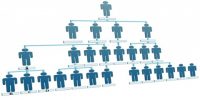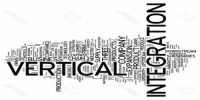Different Motivational and Reward techniques of best Practice Companies
Seeking to increase employee motivation using rewards can sometimes be a daunting task for managers. But it shouldn’t be. When armed with the right information and the proper techniques, managers can be experts at enhancing motivation using rewards in no time.
Managers who are developing, revamping or currently implementing an employee rewards program should consider these 20 different motivational and reward techniques:
(1) Involve all employees in the development, implementation, and revision of rewards programs: Involving all employees (or representatives from different positions) will encourage communication between employees and management about the rewards process. It will also ensure that both employees and upper management are onboard with the reward system.
(2) Ensure that employees view the rewards as worth the effort: Including employees in the reward program development process is critical to ensuring that they value the rewards and see them as worth the effort. Managers should value employee input and select rewards accordingly. Employees who see the rewards as worth the effort will be more motivated to work hard to obtain them.
(3) Make sure that employees understand how to earn the rewards: Managers should clearly delineate how employees can earn rewards. When employees have a comprehensive understanding of what is expected of them, they will be are capable of achieving performance standards.
(4) Set reasonable and transparent performance standards for rewards: Employees must see the rewards as attainable in order for them to engage in the necessary effort to obtain them. Check in with employees to ensure that they believe the rewards are within their reach. Also, providing the employees with a dashboard where they can view their performance in real time will allow them to accurately assess their own performance and have realistic expectations for rewards.
5) Base reward determinations on objective performance data: When rewards are distributed based on objective data, employees are more likely to view the process as fair and are also more likely to have a concrete understanding of what is expected of them. This will increase their motivation to achieve the desired performance results.
(6) Once the behavior becomes a habit, distribute rewards based on a variable ratio or variable interval schedule: Variable ratio and variable interval schedules of reinforcement result in the most significant behavior change once the behavior becomes a habit. This change in behavior is also more resistant to weakening. Therefore, one of these reinforcement schedules should dictate the reward distribution process after the behavior has become a habit.
(7) Do not disclose the cash value of non-monetary tangible rewards: Employees who are unaware of the exact cash value of non-monetary rewards are more motivated by them. Do not disclose the amount unless necessary.
(8) Use long-term rewards programs: Long-term rewards programs have the greatest effect on employee performance and the resulting gains last longer.
(9) Balance competitive reward programs with non-competitive programs: Competitive incentive programs are just as effective as non-competitive reward programs in increasing performance. An effective rewards strategy should include both.
(10) Make rewards an integral part of the company’s strategy: Rewards are invaluable in aligning employee behavior with the organization’s business strategy. Ensure that rewarded behavior is in line with company standards, objectives, and strategy.
(11) Change the rewards frequently: When the reward is changed frequently, employees will be more surprised and the process will be more exciting. When employees are excited about rewards, they will work harder to achieve them.















